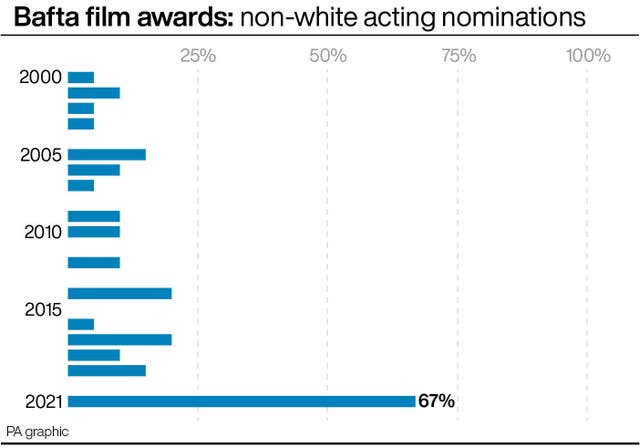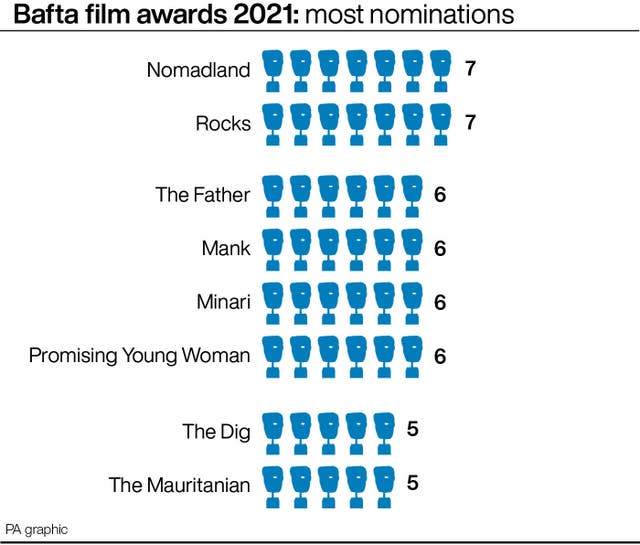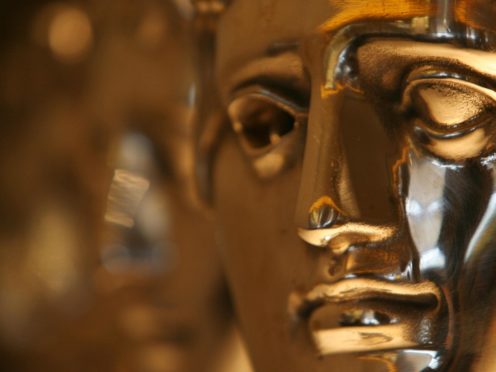Here are some of the key statistics about the 2021 Bafta film award nominations:
– Two-thirds of the acting nominations have gone to non-white performers
Not only is this the highest proportion of non-white acting nominations in the history of the Bafta film awards, it is also the first time white people have not made up the majority.
It represents a complete turnaround from last year, when every acting nominee was white.
Before this year the highest proportion of non-white nominees in the acting categories was 20%, in 2014 and 2017.

– A third of the acting nominations have gone to British performers
This is broadly in line with recent years – the average since 2000 has been 34%.
In 2002, 60% of acting nominations went to British talent, and this remains the highest proportion so far this century.
A particularly lean year for British actors came in 2013 when they accounted for just 15% of the nominations.
The rest of this year’s acting nominations are spread across a diverse range of nationalities, including American, Indian, Danish, French, Irish, Bulgarian and Korean.

– Women make up the majority of nominees for best director, for the first time
Only 11 women have ever been nominated for Bafta awards for best director.
Four of those come this year: Sarah Gavron for Rocks; Shannon Murphy for Babyteeth; Jasmila Zbanic for Quo Vadis, Aida?; and Chloe Zhao for Nomadland.
If one of them wins, it will be only the second time in history that a woman has been named best director.
The first time was in 2010, when Kathryn Bigelow won for The Hurt Locker.

– There is no obvious front-runner based on number of nominations
Unlike in previous years, Bafta has not handed one or two films the lion’s share of nominations.
The most number of nominations for a single film is a modest seven, for both Nomadland and Rocks.
Four films have six nominations: The Father, Mank, Minari and Promising Young Woman.
Two films have five: The Dig and The Mauritanian.

– First-time nominees make up the majority of nominated directors and actors
Four of the six people nominated for best director have never appeared in the category before, while 21 of the 24 people across the four acting categories are first-time nominees.
